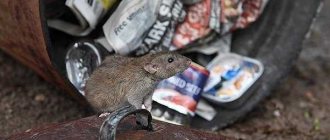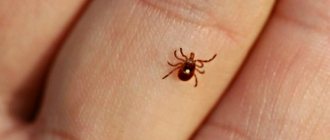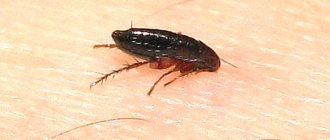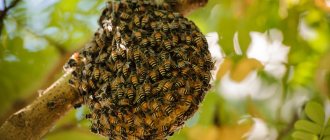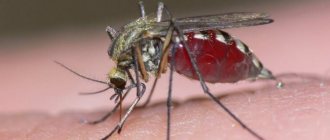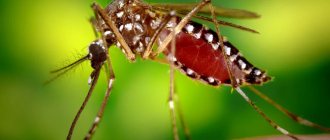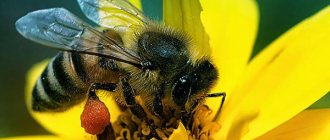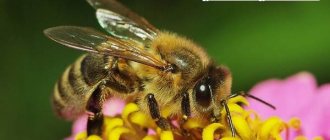Every beekeeper is interested in ensuring that his bees maintain high productivity for as long as possible and delight the owner with abundant bribes. Speaking about how long bees live, it should be noted that, in general, their lifespan is very short. At the same time, proper care of evidence residents allows you to delay the death of insects as much as possible. Let's take a closer look at what affects the life span of a bee and how an apiary owner can take advantage of it.
Life and death are always nearby in the hive; there is a constant cycle here - the place of the dead bee is taken by a new one
Even after death, insects can be beneficial. Tinctures and decoctions of dried bee dead are effective means for increasing human immunity, neutralizing toxins in the body, and slowing down the aging process.
Factors affecting the life of a bee
The number of one bee family can be expressed in tens of thousands of individuals. During the year, their number constantly changes, which is associated with their lifespan. Changes do not only affect the uterus - it is always alone.
One of the most important factors influencing the lifespan of these insects is the strength of the family. The stronger it is, the longer the bees will live.
Another significant factor is the time of birth of the insect. During the year, brood appears several times. If bees feed brood in the fall, their lifespan is affected by the energy spent on this work.
The importance of brood time is also due to how bees tolerate different seasons. It is easier for them to survive summer, since low temperatures with dampness are more destructive than heat. If the heat is too strong, then the bees remain in the hive at this time - there are enough household chores there. They fly out for nectar after the temperature drops. During the cold months, it takes bees a lot of energy to keep warm, which is why some of them cannot survive until spring.
The lifespan of a queen depends on the number of eggs she lays. The larger it is, the faster the bee ages.
The lifespan of bees can also be affected by a lack of nutrients in the food or some disease.
"Honey plants"
The worker bee (honey bee) in the hive provides the club; if their numbers increase, some of them begin to fly for honey. They stop working hard and their life expectancy increases sharply and can reach as much as 50-60 days. The average is 45 days.
Interesting! Many beekeepers claim that the more “workers” in the club, the better, since the amount of honey increases significantly.
To avoid shortening the lifespan yourself, you need to monitor the diet of insects. A bee that makes honey cannot live without food and water for 10-14 days.
Interesting fact! A bee moves less in winter, functions in the body are significantly reduced, including wear and tear, which is why many honey plants, under normal conditions, survive the winter, although they die later in the spring.
How long does a honey worker bee live?
Working insects are female, but are not capable of fertilization. They make up the bulk of the bee colony.
Worker bees have many responsibilities: they must collect nectar, deliver water, build honeycombs, clean them, guard the hive, create the right microclimate in it and feed the rest of the family: the queen, drones and larvae.
Due to the large number of functions, worker bees work around the clock, expending a lot of energy. This affects their lifespan, which is calculated not in years, but in days.
If the family is strong, the insect can live up to 35 days. In weak colonies, the life of a worker bee rarely exceeds 25 days.
Sometimes worker insects live up to 45 days. This phenomenon is usually observed during active honey collection.
Bees from summer or autumn brood usually live up to two months. Overwintered insects can live up to 7-8 months. They survive until the honey harvest, where they can bring some benefit. This life expectancy is due to the fact that they do not have to work much. Autumn bees get good nutrition and sufficient rest, so by winter they are healthy, strong and well-fed.
If bees feed brood in the fall, they spend a lot of energy doing this. Because of this, insects may not survive until the spring honey harvest.
The shortest life expectancy is characteristic of April brood. Such bees live a little more than 3 weeks.
Some interesting facts
The life expectancy of wild bees exceeds that of their domesticated counterparts by 25-30%. Thus, a wild queen bee can live up to 8 years. This is explained by the fact that in nature insects have stronger immunity, feed less brood, and no one takes away their stored food.
The breed has little effect on the life span of bees. It was noted that among summer bees, representatives of the Italian breed live longer, and among winter bees, representatives of the Krajina (Karnika) breed live longer.
How many years does a queen bee live?
Unlike worker bees, the lifespan of the queen of the hive is calculated in years. On average, she can live 2-3 years, but sometimes lives up to 5 years.
This life expectancy is due to the fact that the queen’s only duty is to reproduce offspring. All the insect's energy goes into this.
The queen does not have to collect nectar, build honeycombs, or produce honey. Its nutrition is the task of worker bees, which produce royal jelly, which contains all the necessary nutritional elements.
The queen is capable of laying up to one and a half thousand eggs per day - she works constantly. The more eggs a bee lays, the faster it dies from old age.
When a young and fertile female appears, the former queen is simply pulled out of the hive. After this, she quickly dies due to hunger. Without worker bees serving her, the queen lives only 2-3 days.
The uterus can be replaced artificially. In apiaries this is done every 2 seasons, since the bees are most fertile in the first two years.
In season
Bees born at the end of summer manage to gain enough fat mass for a successful winter. Not overloaded with work, insects are actively preparing for winter and stocking up. And in such cases they can live up to six months or more.
Honey worker bees, working exhaustingly all summer for the family, live very little, no more than 1 month. Having fulfilled their assigned functions, they do not live until autumn. The shortest period of life is for bees that appear in early spring; they die already at the age of 20-25 days.
Insects of the summer and autumn brood, which are not involved in raising offspring, often live up to 2 months. Those individuals that have spent a lot of vitality and energy die much faster. Remaining in the hive during the cold period, in winter they perform a protective function and warm the uterus. Successfully overwintered individuals can live for more than 7 months and benefit the family during the period of active honey collection.
Interesting! It is a scientifically proven fact that bees that appeared in different periods differ from each other anatomically and physiologically. This is due to differences in temperature, quality and quantity of feed. These features are established at birth and are a decisive factor for life expectancy.
The lifespan of insects left without food depends on several factors:
- air temperature;
- age;
- physical state.
Not all bees that remain in the hive for the winter survive until warm weather arrives. The cause of death may be:
- lack of food;
- drafts;
- parasites;
- infections, diseases;
- low temperatures.
Therefore, beekeepers carefully prepare bee colonies and hives before the onset of winter frosts. To increase their life expectancy, bees are regularly fed and the evidence is insulated.
How long do drones live?
Drones are the only male representatives of the bee colony. Their purpose is to fertilize the uterus and protect it.
Drones hatch in the spring from eggs that have not been fertilized. On the 10-13th day they can already begin their duties.
Since the queen is fertilized almost on the fly, many drones are killed by honey-buzzard birds. The surviving representatives are thrown out of the hive when they are no longer needed.
These members of the family live only in the summer. During this period, they fertilize the queen and protect her, and worker bees feed them.
Most often, drones live only a few weeks, but sometimes they can live up to a year.
As soon as there is no longer a need for drones, they stop feeding them, since there is no point in wasting food on them. Worker bees carry unwanted insects out of the hive or push them out without letting them back in. Hunger and cold quickly kill drones.
A few drones are left in the hive if there is no queen or she is not fertilized. These representatives will be needed for the new queen.
Expelled drones are sometimes allowed into another colony when the queen in them is not fertilized. After completing the task, they are then expelled anyway.
Composition and responsibilities of hive members
A bee family includes one queen, several hundred or tens of thousands of workers, and tens or hundreds of drones. When the hive is in the growing stage, multiple queens are allowed.
It is important to understand that this fact is not accidental, since the hive is a kind of community. Its representatives replace each other at certain time intervals, but the integrity of the family is not lost, since their lifestyle involves working and living together, and individual existence is impossible.
The lifestyle of a worker bee is as follows:
- Construction of warehouses for feed (honeycombs).
- Collection and storage of supplies.
- Feeding the offspring.
- Hive protection.
- Filling all the needs of the bee family.
Spring feeding of bees: honey, kandi, sugar syrup
The uterus is engaged in laying eggs, the number of which is 2000 or more units, which in weight is significantly greater than its own body weight.
The drone has only one duty - fertilization of the uterus. But sometimes he can act as a bodyguard. Thus, when birds encroach, the latter prefer not to touch the queen, but to feast on a nearby bee.
During the process of insemination, the share of the reproductive organ is split off and the drone dies . They are designed in such a way that they cannot carry out other bee activities, due to the fact that they lack wax glands, pollen collection containers and a sting. In addition, the drone has a significantly short proboscis, which is not in its favor.
Varroatosis of bees: prevention and treatment of varroatosis
In breeding conditions, the bee colony is engaged in preparatory work, including: laying queens and drones for subsequent reproduction, scouting for a new habitat for the hive.
Young honey bees operate in energy saving mode, due to the fact that most of their energy will be needed when collecting pollen.
When the preparatory measures are completed, the hive sends 1, often several swarms (queen with workers) for the purpose of autonomous life in another place. This happens during the natural course of the reproduction pattern and functioning of hives. But experienced beekeepers do not allow such developments, distributing families in advance at their discretion, which guarantees order.
Responsibilities of growing bees
After about 1.5 weeks of work in the bee house, the grown honey-bearing individuals move on to field duties. In conditions of a colossal loss of old workers, with a large volume of work, the time spent in the hive is reduced. But it may also happen that a certain number of worker bees will take on “household” duties.
Bee workers acquire skills gradually:
- Water transfer.
- Pollen collection.
- Nectar collection.
The older, more professional representatives begin exploration to find new sources of nectar. These bees have an external characteristic feature - a bald back.
The most favorable flight distance to honey plants is considered to be Ø 3 km. Of course, workers make flights of 5-7 km. At the same time, they lose their vital resources and die faster.
How long does a bee live after being stung?
Bees are fairly non-aggressive, but in some cases they can sting a person or animal. To do this, insects have a sting, invisible in the normal state, which remains in the body of the creature bitten by a bee.
To tear it off, the insect makes a sharp jerk, so along with the sting it often loses part of its internal organs. This leads to the death of the bee, which occurs just a few seconds after the sting.
A bee may not die if it bites a creature that has a chitinous coating. In this case, the sting is easily removed and remains with the bee. Her life expectancy will be standard.
Different members of the bee family differ not only in their responsibilities, but also in their life expectancy. It can range from several weeks to several years. Many factors influence the lifespan of insects.
0
0
Copy link
Diseases
If the number of insects in the family has greatly decreased, but the beekeeper has provided the insects with the most comfortable conditions. It is likely that the honey queen and the colony are sick with nosematosis. It is difficult to say how long a bee with nosematosis lives, since it all depends on the degree of infection. The disease is caused by the parasite Nosema Apis, which can enter the digestive tract with poor-quality nutrition. The parasite destroys the intestines of honey plants, which leads to instant or long-term (1-2 weeks in summer) death.
Interesting fact! Thanks to their stronger immunity, wild bees cope with nosematosis without outside help.
Lifestyle
Bees are amazing social black and yellow insects that have a highly organized life. Together they obtain water and food, guard and defend their hive. In any swarm there is a strict hierarchy, where each group does its own thing. The number of honey plants in a swarm may vary. The more bees enter a swarm, the greater the differences between honey plants of different levels of the hierarchy. Moreover, each family, of course, has its own queen.
Honeybees form fairly large families, which include one queen, thousands of working females, and in the summer also a couple of thousand drones. Alone, bees will not be able to survive and create a new family.
How to improve the living conditions of insects
In order to obtain not only good honey, but also to preserve the desired appearance of the colony, care is taken to create favorable conditions for the life of insects:
- They create a high-quality hive (large, for a family or several, with an internal temperature of at least 14°C).
- Provide insects with a favorable wintering environment (plenty of food, water, warm place).
- Place houses in flower-bearing areas so that worker bees have the opportunity to collect as much pollen as possible.
- They monitor the hatching of young bees and, if necessary, replace the queen that lives in the family with another one ahead of schedule.

